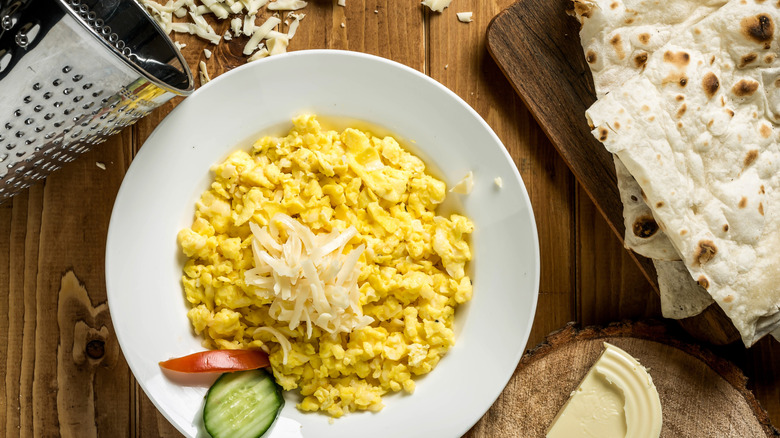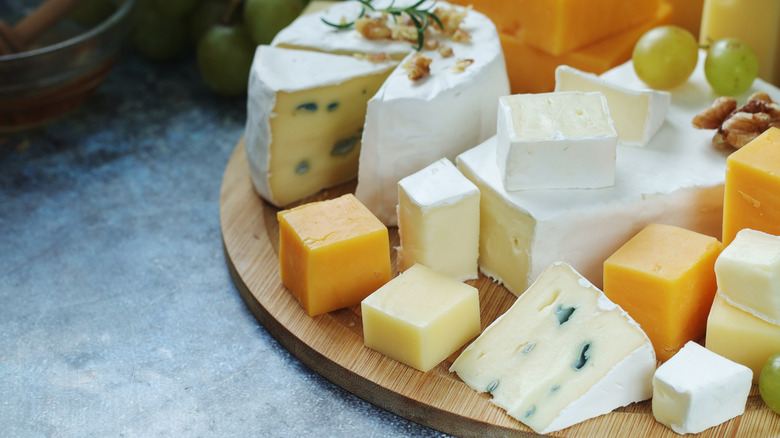The Best Time To Add Cheese To Scrambled Eggs For The Perfect Melt
While you don't really need more than one ingredient for scrambled eggs, cheese is an absolutely mouth-watering addition. Cheddar, American, Swiss, and even cheeses like gruyere all make delectable flavor boosters. However, when should you throw in the cheese to achieve the best possible meltiness? Well, you can take a tip from an egg expert to get the answers you need. Chef Nelson Serrano-Bahri is the Director of Innovation at The American Egg Board, and he tells The Takeout that the best way to add the cheese is to do it off the heat.
According to Serrano-Bahri, one should first cook the eggs low and slow until they are almost entirely set. "Then remove [them] from heat, fold in finely shredded cheese, and cover for 10-20 seconds so residual steam melts it gently," he explains. Doing this melts the cheese without making the fluffy egg curds greasy. But there are exceptions to this rule. As Serrano-Bahri notes, "Very hard cheeses, however, sometimes benefit from a brief reheat on low to fully soften." Keep this in mind, and you'll get the creamiest scrambled eggs with all the gooey melted cheese your heart desires.
Not all cheese is created equal
Different cheeses have different melting points, and Chef Nelson Serrano-Bahri has suggestions to guide you through these options as well. Semi-soft cheeses, such as Monterey Jack and non-aged cheddars, should be melted as described above. Aged and stronger cheeses are a different matter, though. Serrano-Bahri says that for Gouda, Comté or cheddars, you should take another approach. "Add in the last 15 to 30 seconds on low heat or fold off-heat and rest covered," he says.
Hard or crumbly cheeses,such as Parmegiano or pecorino, also require specific handling. "Microplane [them] over finished eggs or whisk a teaspoon into raw eggs for added umami without stringiness," suggests Serrano-Bahri. And if you're craving something with a sharp, tangy punch, like a goat cheese or blue cheese, he offers this strategy: "Crumble in off-heat or just before serving for creamy pockets and visual contrast."
So, for the most part, you should opt for adding cheese without heating it again afterwards, then let it rest until the residual warmth makes it oozy. You can also use non-dairy cheese for a vegetarian option, as vegan cheese gets very sticky and gooey, but you may need to add a little additional fat to it to get a good melt.
And if you're craving a more emulsified, incorporated cheese melt, there are still ways to achieve it. The biggest seasoning hack needed for creamy scrambled eggs with cheese is to add a little more dairy. According to Nelson Serrano-Bahri, "A spoonful of cream, milk, or water can help emulsify the melt, especially with non-processed cheeses." Alternatively, some cottage cheese or sour cream can also be mixed into eggs while cooking, as they won't make the curds end up feeling greasy.

